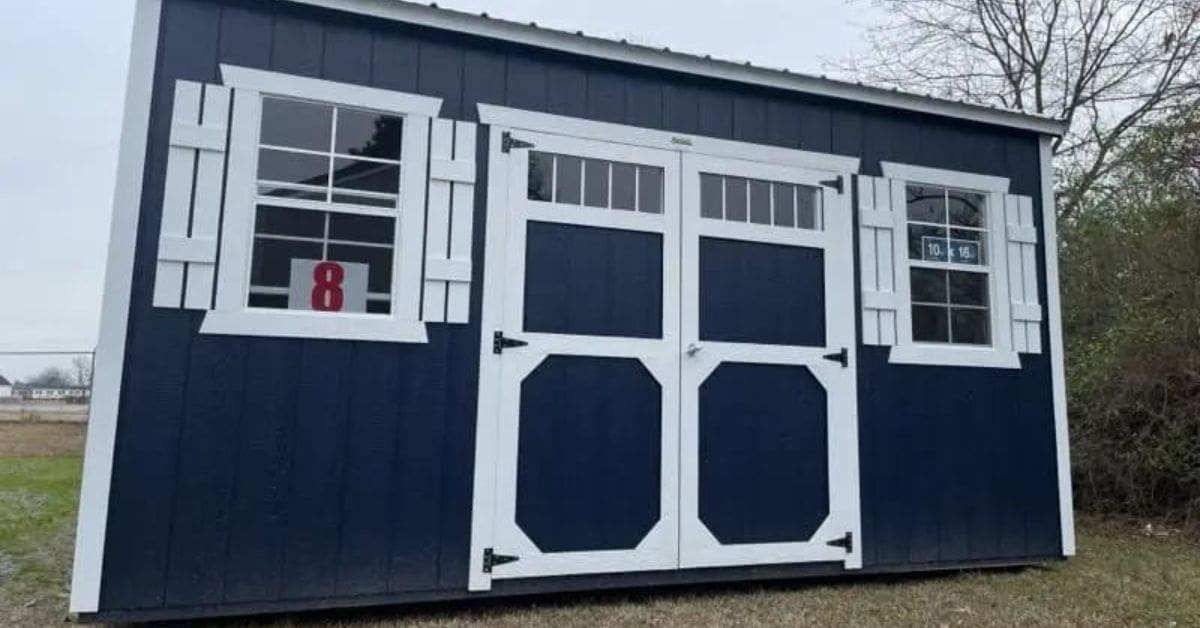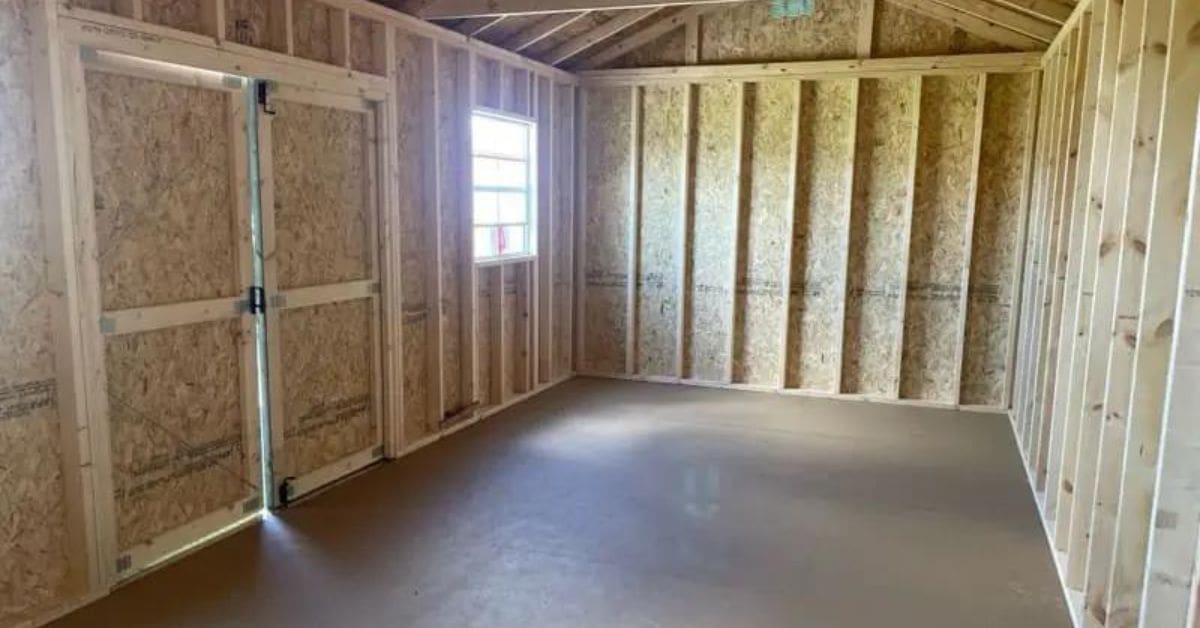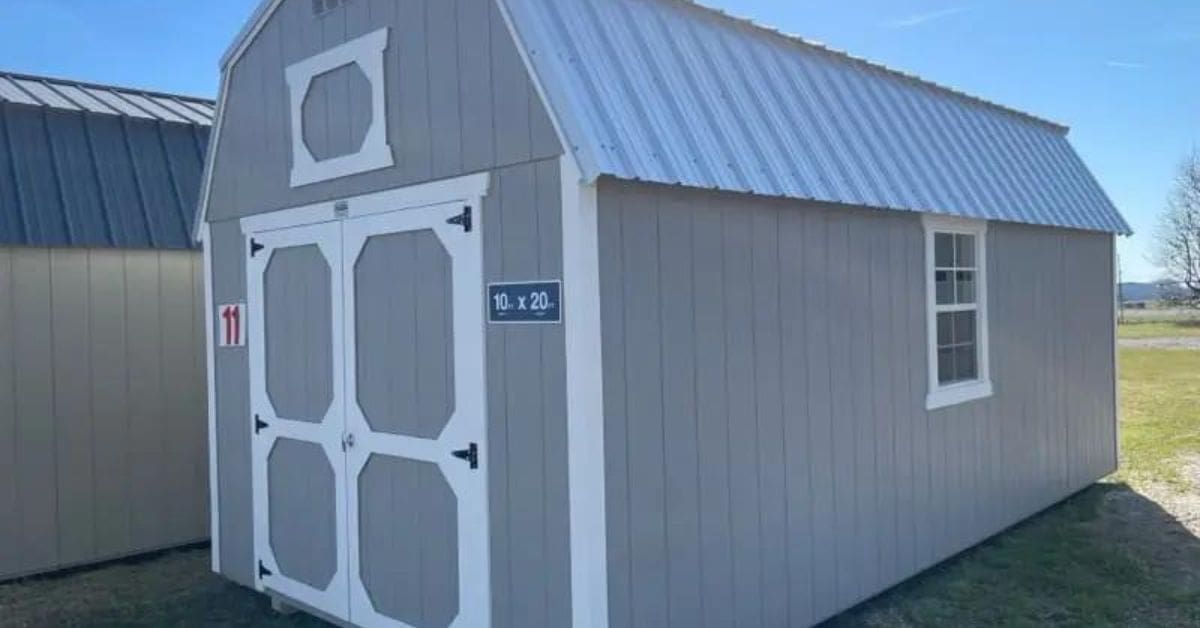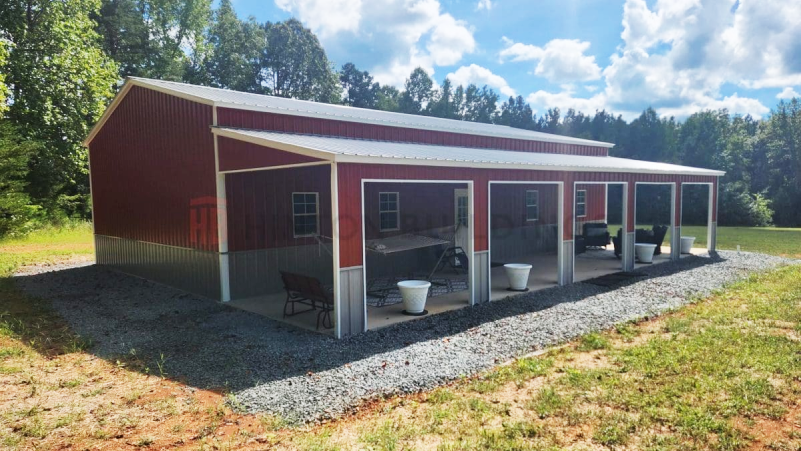
Sheds are popular among homeowners seeking versatile storage solutions for their backyards. They provide a practical space for storing tools and equipment. Homeowners can also transform them into workshops, hobby rooms, or cozy retreats.
When comparing metal versus wood sheds, you’ll want to choose the right one for your needs. We’ll explore the pros and cons of each type so you can make an informed decision.
One of the biggest advantages of metal sheds is their durability. Made from galvanized steel or aluminum, these buildings can withstand harsh weather conditions. They’re less likely to suffer from rot, pest infestations, or warping than wooden structures.
Another key benefit is low maintenance. Metal sheds require minimal upkeep compared to their wooden counterparts. A quick wash with a hose is usually enough to clean them. This is particularly appealing to people who want a low-effort backyard shed.
Security is another advantage of metal sheds. They are generally more difficult to break into than wooden sheds, providing better protection for valuable tools and equipment. The sturdy construction of metal buildings can deter potential thieves, giving you peace of mind that your possessions are safe.
Despite their many advantages, metal sheds have some drawbacks. One of the most significant is their tendency to rust over time, especially in humid or coastal areas. Corrosion can weaken the structure and affect its appearance, so regular checks and maintenance are necessary to prevent this issue.
Customization options are limited for metal sheds. They often come in pre-fabricated designs, offering less flexibility for homeowners who want to personalize their sheds. While useful, a metal structure might not blend with your garden or backyard.
Metal buildings can become quite hot during the summer months, making them uncomfortable to use as workshops or relaxation spaces. Insulation can mitigate this issue, but it adds to the overall cost and complexity of installation.

Wood structures are aesthetically appealing, and the natural look of wood can enhance the beauty of any backyard by providing a rustic or traditional charm that metal sheds can’t match. Plus, you can easily paint or stain the wood to complement your home.
Customization is another significant advantage of wood sheds. They offer more flexibility in design—you can tailor them to meet your needs. Whether you want additional windows, shelves, or unique architectural details, wood allows for a high degree of personalization.
Eco-friendliness is a principle among many homeowners, and wood structures can be more sustainable than metal. Using responsibly sourced timber can reduce the environmental impact of installation. Additionally, wood sheds are easier to repair than metal, extending their lifespan.
On the downside, wood sheds require more maintenance than metal. They need regular treatment to protect against rot, insects, and weather damage. This includes applying sealants, paint, or preservatives periodically, which can be time-consuming and costly.
Security is another concern. Wooden structures are generally easier to break into compared to metal ones. Thieves can easily pry open wooden doors or window frames, making them less secure for storing valuable items.
Wood buildings tend to be more expensive initially than metal ones. The cost of materials and construction can be higher, making them bigger upfront investments. However, the potential for customization and repair can offset these costs over time.
When selecting a shed type, consider the climate and weather conditions in your area. Wood sheds in regions with high humidity or frequent rain might require diligent maintenance to prevent rot and mold, while metal sheds could be more prone to rust in these conditions.
Conversely, wood can withstand the elements in dry, arid climates if regularly treated, but it may also crack or warp without proper care. Understanding your local weather patterns will help you make the best choice.
The intended use of your shed is a critical factor in your decision. If you plan to use your shed primarily for storage, metal is better due to its durability and security features. A wood structure might be more suitable if you envision using it as a workshop or creative space. The natural insulation properties of wood create a more comfortable environment for extended use, and you can customize the layout to fit your needs.
Your budget will guide your choices. Generally, metal sheds are more economical upfront than wooden ones, as the materials are readily available and require simpler construction processes.
Wooden buildings are more expensive initially but offer better long-term value thanks to their customization potential and the fact that they are easy to repair. Evaluate your budget for the purchase price and ongoing maintenance costs associated with each shed option.
When it comes to aesthetics, wood sheds generally take the lead thanks to their warm, natural appearance. The organic feel of prefab wood storage buildings can seamlessly blend with any garden or backyard setting, providing a rustic charm that many homeowners find appealing.
While metal sheds are sleek and modern, their utilitarian look may not appeal to everyone. They often come in standard colors and finishes, which can limit their compatibility with certain architectural styles or personal tastes.

Creating a checklist can help to clarify your priorities. Consider aesthetics, security, customization, and maintenance preferences. This step-by-step approach ensures you weigh all critical aspects before making a final decision.
When researching, look for resources such as online reviews, expert opinions, and local supplier information. Engaging with local contractors who have experience in shed construction can also be beneficial. They could offer professional insights into building regulations and permits in your area.
If you’re feeling overwhelmed by the decision-making process or lack the expertise to assess materials and construction methods, seek professional assistance. Hiring a contractor who specializes in shed design and installation can provide you with advice based on your needs and preferences.
Choosing between a metal and wood shed boils down to your needs, preferences, and budget. Each one offers unique advantages and disadvantages. By considering these factors, you can choose the right one and ensure your investment pays off!
